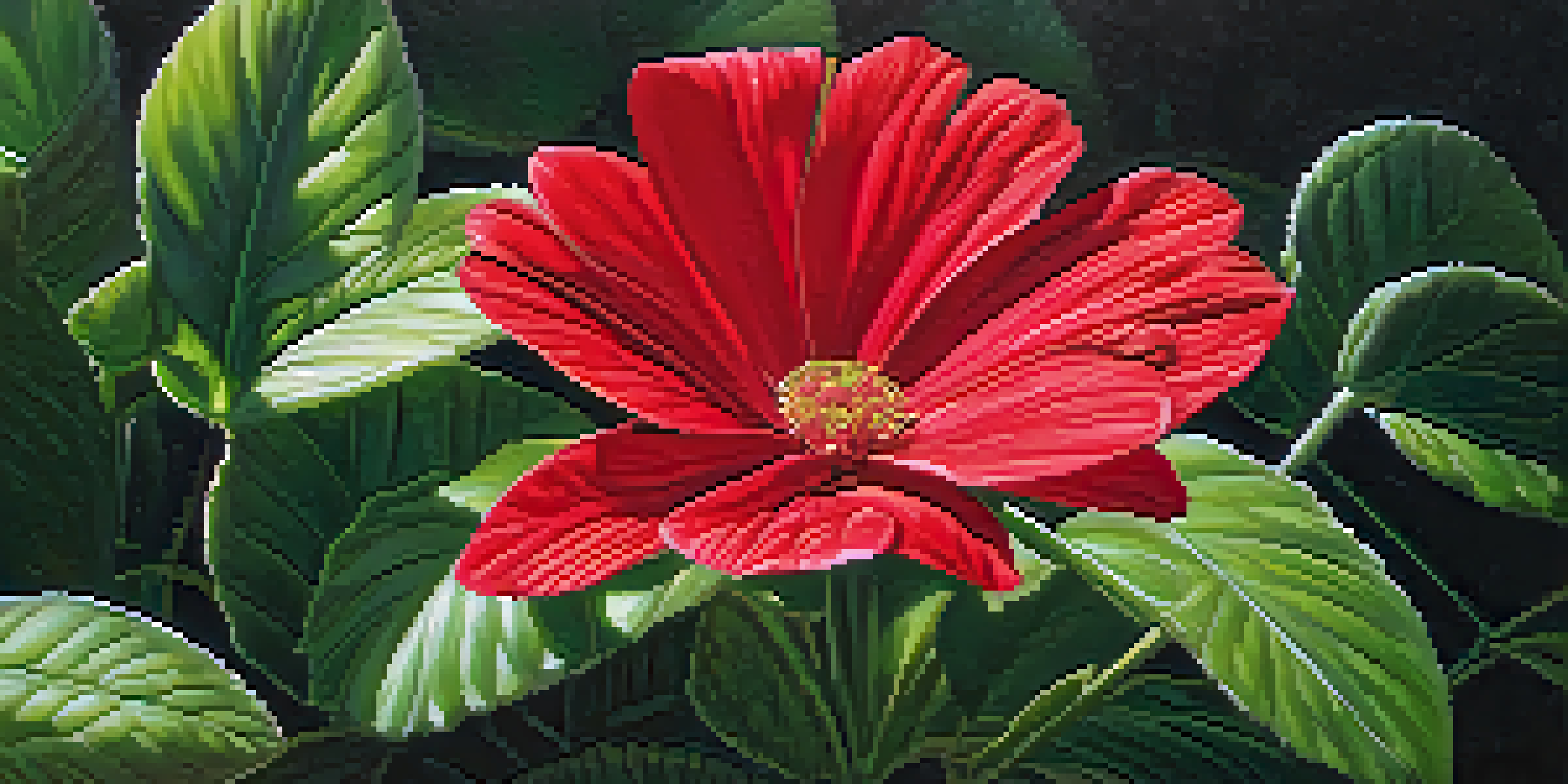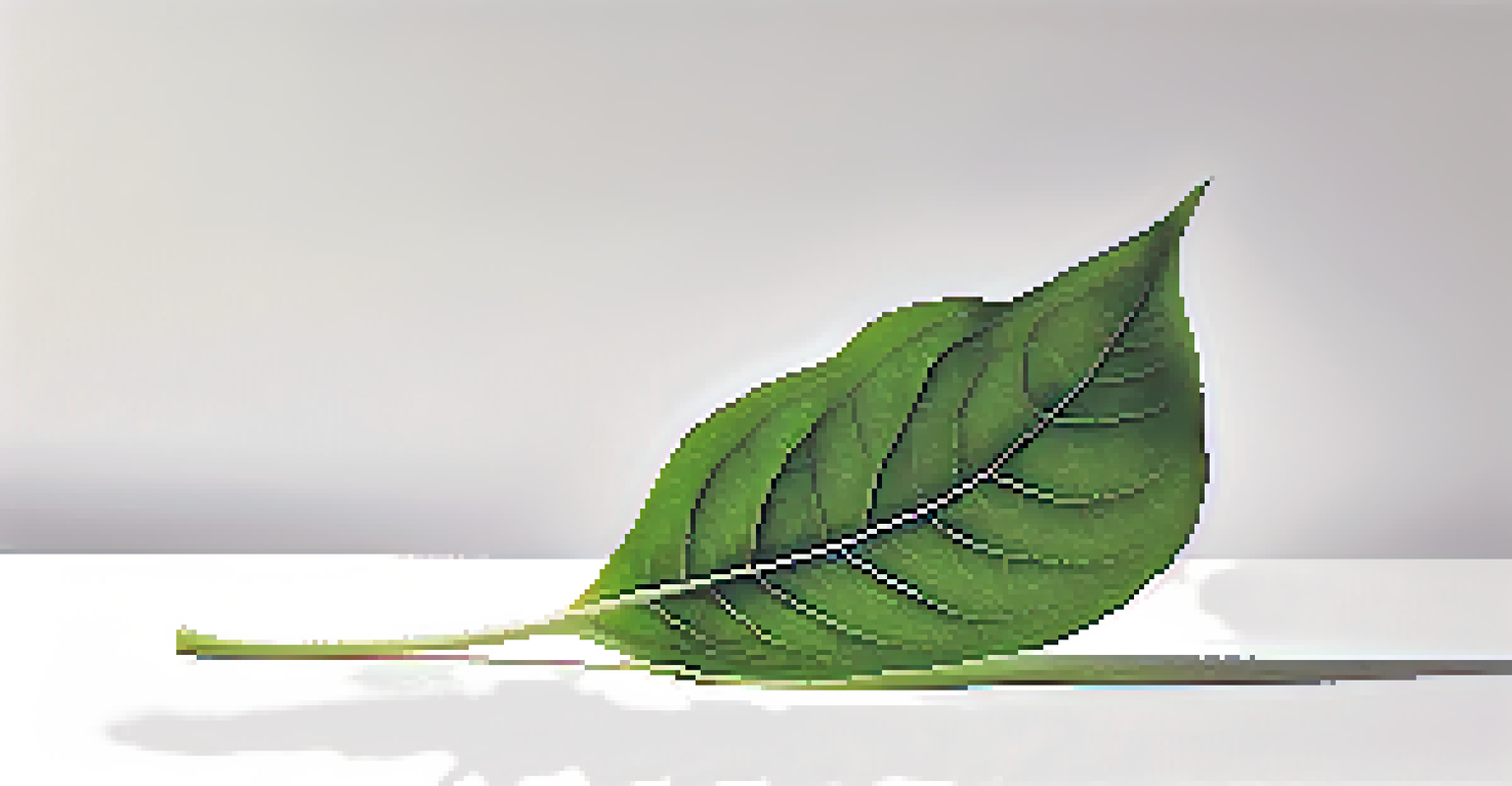Composition Techniques to Create Striking Plant Images

Understanding the Basics of Composition in Plant Photography
Composition is the backbone of any great photograph, including plant images. It involves arranging elements within the frame to create a pleasing and effective image. Think of composition as the blueprint of your photograph, guiding the viewer's eye to where you want it to go.
Composition is the artist's way of bringing order to the chaos of nature.
By mastering composition techniques, you can elevate your plant photography from mundane to magnificent. This is crucial when capturing the intricate details and vibrant colors of plants, which can easily get lost without the right framing. Remember, a well-composed shot can make even the simplest plant look stunning.
To start, familiarize yourself with fundamental composition rules like the rule of thirds, leading lines, and framing. These concepts will serve as tools in your creative toolbox, helping you to craft images that draw in the viewer and leave a lasting impression.
Utilizing the Rule of Thirds for Balanced Images
The rule of thirds is a classic composition technique that can dramatically improve your plant photography. Imagine your frame divided into nine equal parts by two horizontal and two vertical lines. Placing your subject along these lines or at their intersections creates a more dynamic and balanced image.

For instance, if you're photographing a blooming flower, position it off-center using the rule of thirds. This not only adds interest but also provides space for the surrounding elements, like leaves or the sky, enhancing the overall composition. It encourages viewers to explore the entire frame.
Master Composition for Stunning Photos
Understanding and applying composition techniques like the rule of thirds can elevate your plant photography significantly.
While the rule of thirds is a great starting point, feel free to break this rule once you become comfortable. Experimenting with unconventional placements can lead to unique and striking images that stand out in the crowded world of plant photography.
Harnessing Leading Lines to Guide the Viewer’s Eye
Leading lines are another powerful composition technique that can transform your plant images. These are natural lines in your scene that lead the viewer’s eye towards the subject, creating a sense of depth and intrigue. Think of pathways, branches, or even the edges of leaves that can lead towards the main focal point of your photograph.
Photography is the story I fail to put into words.
For example, if you’re capturing a winding vine, position the camera to emphasize the line created by the vine as it stretches towards a flower. This technique not only enhances visual interest but also adds context to your image, making it feel more immersive.
When using leading lines, consider the angle and perspective of your shot. A low angle can emphasize the lines and create a more dramatic effect, while a high angle can offer a broader view. Experimenting with different perspectives can yield striking results and elevate your plant photography.
Incorporating Negative Space for Impactful Images
Negative space refers to the area surrounding your subject that remains empty or uncluttered. Using negative space effectively can create a sense of simplicity and elegance in your plant images. It allows the viewer to focus on the main subject without distractions, enhancing its impact.
For instance, if you photograph a single leaf against a plain background, the negative space around it emphasizes its shape and texture. This minimalist approach can evoke strong emotions and draw attention to the beauty of the plant itself.
Use Color Theory for Impact
Incorporating color theory can enhance visual appeal by creating striking contrasts or harmonious compositions in your plant images.
To incorporate negative space, consider your background and the composition of your shot. A clean, less busy background can work wonders in highlighting your subject. Experiment with different arrangements and backgrounds to find the perfect balance that showcases your plant beautifully.
Using Color Theory to Enhance Plant Photography
Color theory plays a crucial role in plant photography, influencing mood and visual appeal. Understanding how colors interact can help you create more striking images. For example, complementary colors—those opposite each other on the color wheel—can create vibrant contrasts that draw the viewer's eye.
Think about a bright red flower against a backdrop of lush green foliage. The contrast not only makes the flower pop but also enriches the overall composition. Alternatively, using analogous colors—those next to each other on the color wheel—can create a harmonious and soothing effect.
Experimenting with color combinations can lead to unique and eye-catching images. Whether you're capturing a colorful garden or a single plant, being mindful of color relationships can significantly elevate your photography and help convey the mood you aim to express.
Exploring Different Perspectives for Unique Shots
One of the simplest yet most effective ways to enhance your plant photography is by changing your perspective. Instead of shooting from eye level, try getting low to the ground or finding an elevated viewpoint. This shift can reveal new angles and details that may go unnoticed from a standard perspective.
For example, capturing a flower from below can create a dramatic effect, especially when backlit by the sun. This perspective not only highlights the flower's shape but also allows for stunning light effects that add depth to the image. It's all about showcasing the plant in a way that feels fresh and captivating.
Explore Unique Perspectives
Changing your shooting perspective can reveal new angles and details, making your plant photography more captivating.
Don't hesitate to experiment with various heights and angles. The more diverse your perspectives, the richer your portfolio will become. Each unique shot can tell a different story, inviting viewers to see plants in a new light.
Emphasizing Texture to Create Visual Interest
Texture can add a compelling dimension to your plant images, making them feel more tactile and engaging. Close-up shots that highlight the intricate details of leaves, petals, or bark can showcase the beauty of the plant in a way that broader shots cannot. Think of it as inviting the viewer to reach out and touch the image.
For instance, capturing the rough texture of a cactus or the delicate veins of a leaf can evoke a sensory response. Using natural light can further enhance these textures, casting shadows that create depth and visual interest. This technique allows you to tell a more intricate story about the plant.

To emphasize texture, consider using a macro lens or getting very close to your subject. Play with focus and depth of field to isolate the texture, creating a striking contrast against softer backgrounds. This approach can transform ordinary plant photos into extraordinary pieces of art.
Editing Techniques to Enhance Your Plant Images
Post-processing can be the cherry on top of your plant photography. While composition is crucial, editing allows you to refine and enhance your images, bringing out the best in your shots. Basic adjustments like brightness, contrast, and saturation can significantly impact the final look of your plant photos.
For example, increasing the contrast can make colors pop, while adjusting the brightness can help bring out details in shadowed areas. Don’t be afraid to experiment with different editing styles to find what resonates with your vision. Each image can be transformed into a unique expression of your artistic perspective.
Additionally, consider using editing software to crop your images for better composition or to remove distractions. Fine-tuning your photos can elevate them from good to great, allowing your stunning plant images to shine and captivate your audience.